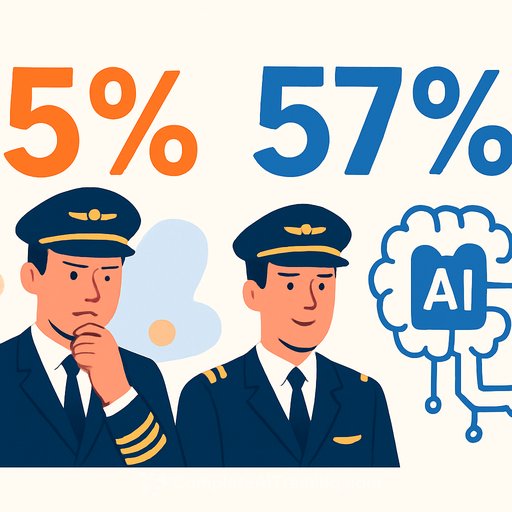From silos to synergy: What happens when CEOs and CHROs build strategy together?
As AI reshapes industries, the relationship between CEOs and CHROs must evolve beyond routine transactions. The key question: how can they co-lead business reinvention effectively? A recent session at The Economic Times Future Forward Singapore 2025, titled “Power Duo: CEO & CHRO as Architects of Business Reinvention,” gathered top CEOs to address this challenge.
The paradox in boardrooms
Across sectors like luxury retail and healthcare, CEOs acknowledge workforce priorities, ranking people behind only growth and technology. Yet, investment in people is plateauing. Gartner’s research shows that only 57% of CEOs plan to increase investment in people and culture for 2024-25, down from 69% in 2023. Hiring plans also decline, with just 46% expecting to increase recruitment.
This shift isn’t neglect but recalibration. With 86% of CEOs looking to AI for revenue growth and over half expecting an 11% productivity boost from generative AI within two years, technology dominates strategic focus. Workforce strategies risk being deprioritized despite being crucial.
Why CHRO–CEO partnerships are pivotal
The tension is clear: CEOs prioritize future growth, but talent—the engine of that future—may be left behind. CHROs must align with CEO strategies but also challenge and refine them to keep workforce investment on par with innovation.
The session at Future Forward Singapore featured CEOs from LUXASIA Group, Thomson Medical Singapore, Ang Mo Kio – Thye Hua Kwan Hospital, and former leaders from the Singapore Institute of Management & IDA International. The core inquiry was how CEOs and CHROs can shift from transactional roles to transformational partners in an AI-driven world.
The blind spot in strategy conversations
Chin-Seong Seah highlighted a common issue: “CEOs usually have a blind spot, and the blind spot is HR.” CEOs often inherit organizational structures without questioning if they still fit the strategy. This gap leaves a vital question unanswered: who ensures strategy and structure align?
Seah’s answer is direct—CHROs must fill this role. By mastering organization design, identifying systemic issues like unclear responsibilities, siloed teams, and mismatched incentives, CHROs can become essential players in strategic discussions rather than passive observers.
Reframing HR: From resource to talent & excitement
Satyaki Banerjee, CEO of LUXASIA, emphasized the importance of language. “Human resource” feels transactional, reducing people to commodities. His company refers to its workforce as “Talent and Excitement,” reflecting their energy and distinct value.
Banerjee blends personalized, technology-enabled training with hands-on engagement, ensuring employees are empowered and connected. He stressed that long-term retention in a tough retail environment signals a deeper commitment: it’s not just a job, but a calling.
Empathy as a strategic lever in healthcare leadership
Suen Ming Lee, leading a hospital workforce, shared that healthcare combines elements of hospitality, banking, food service, and retail. The common thread? Empathy. Patient care depends on staff wellbeing. “Happy staff, happy patients,” he said.
Ardi Hardjoe added that in healthcare, compassion outweighs credentials. Skills can be taught, but empathy cannot be faked. With Singapore set to add 24,000 clinical professionals over five years, embedding values-based hiring and culture-building through CEO–CHRO collaboration is essential to maintain care quality.
From reporting to solving: The missing link in CEO–CHRO synergy
Manu Khetan reframed the CHRO role sharply: CEOs only hear about problems, so CHROs need to bring solutions, not just issues. When CHROs ask, “What are your problems, and how can I help solve them?” the partnership becomes transformational.
This shift from reporting to problem-solving bridges perception and impact. CHROs who co-create strategy and own execution transition from cost centres to growth drivers—critical in an AI-driven era demanding continuous reinvention.
Rapid-fire insights: Human-centred strategies
- One HR metric every CEO should track? “IPO retention,” said Banerjee, highlighting loyalty’s value.
- Gut feel or data in hiring? “Both,” said Hardjoe. Values guide gut; data confirms it.
- Who plays for your company every day? “The staff,” answered Suen. “Happy staff, happy patients.”
- One word for the leader of the future? “Trust,” said Seah. A vital anchor in an unpredictable world.
The future is shared leadership
The session closed on a clear message: leadership must be shared. CEOs can’t succeed without CHROs who translate vision into culture. CHROs need CEOs ready to share the strategy table.
For organizations balancing AI and workforce transformation, this CEO–CHRO “power duo” could determine who thrives.
Continuing this conversation, The Economic Times Future Forward Malaysia will host “CEO–CHRO Duo Insight: How We Built It Together: The CEO–CHRO Playbook for People-powered Business Growth” on 21 August 2025 at Crowne Plaza Kuala Lumpur. The session features Henrick Choo (CEO – Malaysia, NTT DATA) and Nadiah Abdullah (Chief Human Capital Officer, Malaysia Airports), focusing on actionable frameworks for co-creating people-centric strategies that drive business reinvention.
Your membership also unlocks:






